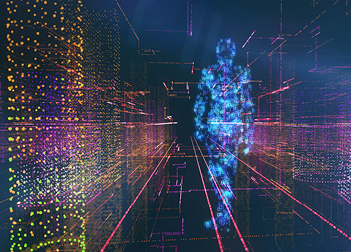AI. Machine Learning. Deep Learning. As a professional in the field of radiology or radiation oncology, it is nearly impossible for you to go a day without hearing at least one of these words, if not all three. AI is riding high on the hype cycle curve and I would venture to guess that everyone from your coworkers to your nonmedical friends and family members have not only asked you about it, but have offered their opinion as to how they think it will affect your career. Perhaps you have a strong computer science background and have run machine learning networks of your own. Alternatively, you may be an AI novice with more questions than answers. Whatever the case, I hope to assure you that the ACR is fervently working to ensure that the implementation of these new tools results in making not only your life, but your patients’ lives better.
When it comes to getting a job done well, having the right tools and completing the right training is everything. Far from a computer scientist myself, I’ll rely on a very low tech example to explain my point. During my radiology residency, I picked up the habit of running. Having completed several 10Ks and even a few half marathons, I decided to sign up for a half marathon in my hometown of Pasadena, Calif. Entitled the Rose Bowl Half, I assumed (mistake #1) the race would be a great fit for me. You see, I regularly ran loops around the Rose Bowl stadium to train. It was a gently sloping, familiar course I’d run successfully, countless times before. Showing up on race day, I laced up my neon pink Nike runners and took off with the pack. About two miles in, the pack took a turn. As I kept up with the herd, I became a bit concerned. We were running off the pavement and into a dirt and pebble lined ravine. I could feel the pebbles through the bottoms of my thin soled running shoes. Perhaps this was just a short detour, I thought to myself. After about two miles in the dust, we reemerged on the paved path. Sighing with relief, I picked up my pace. To my dismay, this paved course only lasted another mile. Before I knew it, we were running uphill, up rocks and off road into a desert like part of Pasadena I’d never seen before. My pace slowed down to a near halt as I gingerly stepped over rocks and even boulders, at times on a 20–30 degree grade. You see, what I hadn’t realized was that this was an off-road trail race for which I had not trained and certainly did not wear (or even own) the right footwear. I somehow, by grace, finished the race — but with much more effort and much more slowly than any other I’d completed before.
I assure you that the ACR in its collective wisdom is running the AI/machine learning/deep learning race with much more skill, wisdom, and foresight than I “ran” that trail race. First, we’ve set out to gather the right tools. Rather than wait for industry to dictate which tools are developed and for which indications, the ACR is leading the way through its Data Science Institute™ (DSI). Comprised of numerous subspecialty panels, dedicated members from a vast variety of specialties are working together to dictate which areas of need are best suited to AI assistance. Through the work of these panels, the ACR has developed a cadre of intelligently designed TOUCH-AI use cases to guide AI developers in generating tools radiologists actually want. Once these tools are developed, the ACR provides the incredibly important, appropriately selected, AI training ground. By providing well curated data sets, Certify-AI enables the ACR to test newly generated algorithms and make sure they’re both useful and accurate. Realizing that an algorithm must grow with its users, the DSI’s Assess-AI monitoring service collects feedback from radiologists on real-world performance.
In medical school, we learned that there are very few “always” and “never” clauses in this world. That said, I think you’ll agree that our specialty is always evolving and never stays the same for very long. If you’re like me, this is what made you interested in radiology or radiation oncology to begin with and likely is what keeps you excited about your work. AI is changing and will continue to change how we practice. The ACR is making sure that these changes are positive for us and the patients we care for. If you’re interested in participating in these efforts on a first-hand basis, volunteer to participate on the DSI website. If not, please know that your membership is enabling the ACR to continue this very important work.

